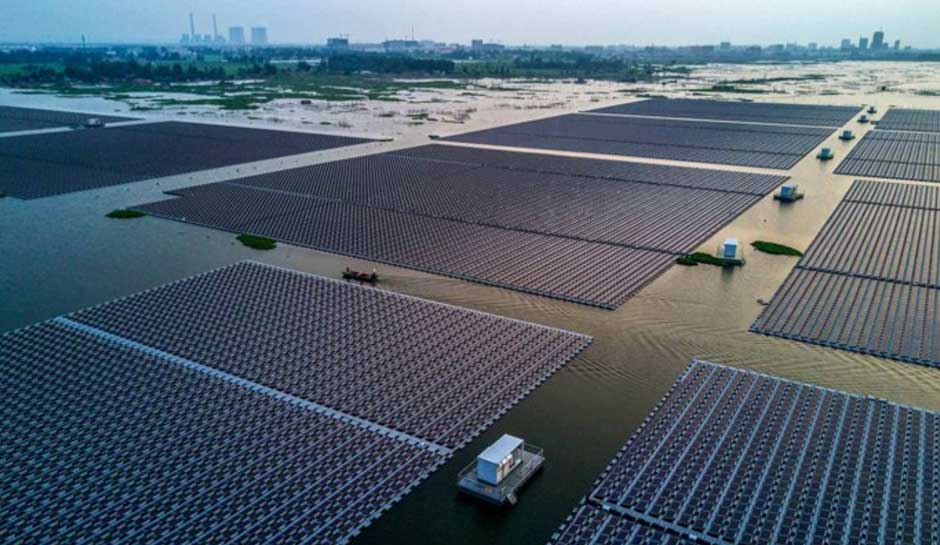In recent years, with the development and application of renewable energy, over-water PV projects are gaining more and more attention. However, the installation and maintenance of photovoltaic panels need to occupy a large area of water, which will cause some impact on traditional fishing activities.
However, the joint development of fisheries and aquatic photovoltaic projects is a win-win strategy that not only realizes the use of renewable energy but also promotes the development of fisheries and enhances the economic and environmental benefits of communities. This paper will discuss the multiple benefits of joint development of fisheries and aquatic photovoltaic projects, and show readers the success of this model in practice through examples from European and American cities.
Renewable Energy Utilization
Water-based PV projects can provide local communities with a large amount of renewable energy and reduce their dependence on traditional energy sources. In the waters covered by PV panels, solar energy can be converted into electricity more efficiently to supply the electricity needs of the local community, providing strong support for the realization of green and low-carbon production and lifestyle. In addition, water photovoltaic projects can also reduce the occupation of land, saving natural resources, in line with the concept of sustainable development.
Promote the development of fisheries
Promoting the development of fisheries
Fishing is a traditional economic activity, but due to environmental pollution and resource over-exploitation, and other problems, the development of fisheries is facing many difficulties. The joint development of fisheries and water photovoltaic projects can achieve a complementary win-win situation, not only does not affect the normal production activities of fisheries but also can provide fishermen with additional sources of income.
For example, the management of some water-based PV projects will use part of the revenue to provide fishing support services to local fishermen and build related fishing facilities. At the same time, since the construction of PV projects requires the cooperation of offshore workers, this also provides certain employment opportunities for fishermen, which further promotes the development of the local economy.
Enhancing the economic and environmental benefits
The joint development of fisheries and aquatic PV projects can bring multiple economic and environmental benefits to the local communities. In addition to providing renewable energy and promoting the development of fisheries, this model can also enhance the visibility and image of the local area. For example, in the city of Hamburg, Germany, a joint development of fisheries and aquatic photovoltaic projects has become a local landmark, attracting a large number of tourists to visit. At the same time, this model can also reduce water pollution and overexploitation of fishery resources, protect the local ecological environment and provide for the sustainable development of the community.
It is worth mentioning that some cities in Europe and America have already started to experiment with the model of joint development of fisheries and water photovoltaic projects. For example, in the Dutch city of Gelderland, a company called “FishFlow Innovations” has developed a new type of photovoltaic panels, which can be arranged under the photovoltaic panels fish tank, so that the photovoltaic panels can both generate electricity and fish. In Colorado, a company called “Fresh Water Farms” has developed a water-based photovoltaic project that not only provides clean energy to local communities but also uses the water beneath the panels for fish farming. These cases show that joint development of fisheries and aquatic PV projects can not only achieve sustainable development but also promote technological innovation and business model innovation.
Conclusion
The development of water-based PV projects is an important direction for technological innovation in the field of renewable energy. With the increasing maturity of photovoltaic technology, the efficiency and stability of photovoltaic panels continue to improve, while the manufacturing cost of photovoltaic panels is also gradually reduced. With these technological advances at the same time, the scope of application of photovoltaic panels is also expanding, and the water photovoltaic project is one of the important areas.
In addition to technological advances, policy, and market promotion is also important to factor in the development of water photovoltaic projects. Globally, many countries and regions have introduced policies and regulations to support the development of renewable energy and provide corresponding subsidies and support measures. In the market, as people pay more attention to environmental protection and sustainable development, the demand for renewable energy is also gradually increasing. This provides a broad market space and development prospect for the development of water photovoltaic projects.

